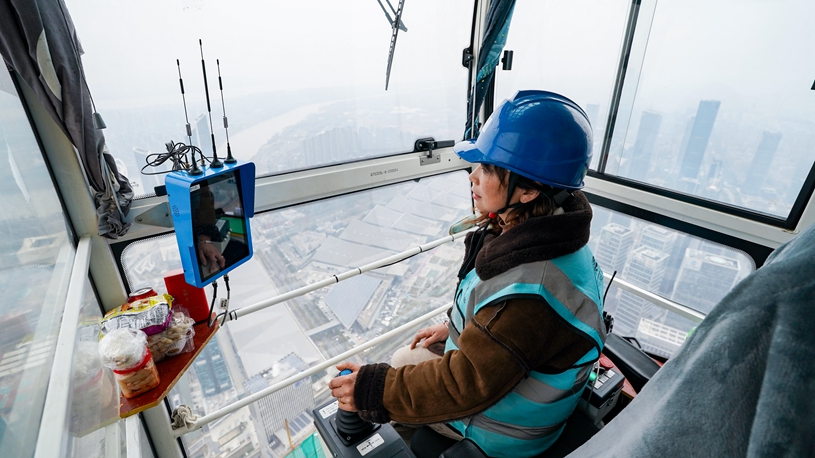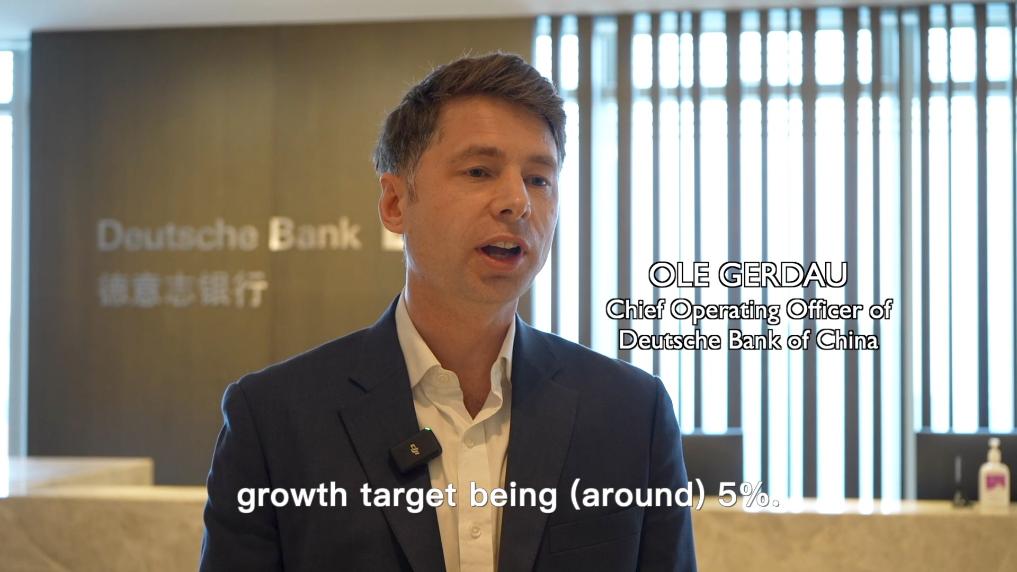*Fueled by a resurgence of interest in traditional culture among the youth and its amplified presence on social media platforms, Hanfu has once again captured the spotlight.
*The growing popularity of this fashion trend has ushered in new business opportunities for many across China, including services such as traditional Chinese makeup, photo shoots, and costume rentals.
*An increasing number of people in China are rediscovering an appreciation for Hanfu and proudly wearing it in public, which reflects cultural confidence.
BEIJING/ROME, March 9 (Xinhua) -- Amidst gold tiles and red walls of picturesque gardens, Chinese youths adorned in traditional attire, known as Hanfu, gracefully posed for photographs, evoking a nostalgic journey to ancient times.
Jin Yujin, a 29-year-old Hanfu enthusiast with some 11,000 followers on China's leading lifestyle social platform Xiaohongshu, posted a video showing a group of women including herself wearing traditional attire for the Lantern Festival, attracting massive engagement.
"Hanfu has a unique charm as its design depicts distinct Chinese style," she told Xinhua. "The growing fondness for Hanfu among people reflects a heightened appreciation for our culture, with more and more people embracing the beauty of our traditional attire and taking pride in donning it."
Jin's fascination with Hanfu started in 2013 when she joined a Hanfu society at her university. "At that time, Hanfu was often perceived merely as costumes from TV dramas," she recalled, acknowledging feeling self-conscious about wearing Hanfu in public.
However, this perception has undergone a significant shift in recent years. Fueled by a resurgence of interest in traditional culture among the youth and its amplified presence on social media platforms, Hanfu has once again captured the spotlight. Jin said she can now spot an increasing number of stores offering Hanfu-style dresses.
BUSINESS OPPORTUNITIES
Around the Chinese New Year holiday this year, it was common to see tourists wearing Hanfu when visiting Chinese cultural heritage sites like the Tang Dynasty (618-907) imperial complex of the Daming Palace National Heritage Park, the Huaqing Palace in northwest China's Shaanxi Province, and the Temple and Cemetery of Confucius and the Kong Family Mansion in Qufu, a UNESCO World Heritage Site in east China's Shandong Province. Qufu even granted free entry to cultural sites for those dressed in Hanfu during the holiday.
The growing popularity of this fashion trend has ushered in new business opportunities for many across China, including services such as traditional Chinese makeup, photo shoots, and costume rentals.
Ms. Li, who runs a Hanfu rental and retro-look service store in Qianmen, located at the heart of Beijing, has been quite busy lately. She said that an increasing number of people are bringing their own costumes, requesting particular traditional makeup and hairdo, which indicates a more obvious personal preference on images in ancient culture.
According to Qichacha, a business data platform in China, the country is home to nearly 6,000 Hanfu-related businesses, with the number continuing to rise. In 2023, the number of new Hanfu-related businesses reached 2,686, a 355.25 percent increase from the previous year.
The traditional Hanfu robe embellished with intricate embroidery can be traced back to the Han Dynasty (202 B.C.-220 A.D.). But, Hanfu has evolved throughout history, resulting in a diverse array of designs seen in different Chinese cities today.
For example, in east China's Suzhou and Hangzhou, people tend to favor the Hanfu style of the Southern Song Dynasty (1127-1279), while in Beijing, costumes from the Ming and Qing dynasties (1368-1911) are more prevalent, aligning with the architecture of the Palace Museum and the Summer Palace. Meanwhile, in Xi'an and Luoyang, former ancient capitals, there's a preference for traditional clothing and cultural elements that better embody the Tang Dynasty culture.
The diversified fashion trends are believed to be conducive to the preservation and promotion of Hanfu.
Caoxian County, situated in east China's Shandong Province, stands as one of the largest Hanfu-producing hubs in China. Presently, it is home to 12,797 online Hanfu stores and 2,186 businesses related to the industry, with nearly 100,000 people involved in the relevant sector.
In January, Hanfu sales in Caoxian totaled approximately 920 million yuan (about 128 million U.S. dollars). As 2024 is the Chinese Year of the Loong, or Dragon, designers have used dragon and phoenix motifs to adorn such attires.
"Many people chose Hanfu as New Year gifts for their relatives and friends," said Li Zilei, a businessman from Caoxian, adding that apart from domestic orders, they have also received orders from overseas.
HANFU CRAZE GOES INTERNATIONAL
The Hanfu fever has also spread to foreign countries like Italy. During Carnival 2024, which concluded across Italy on Feb. 13, and culminated with the famous Venice parade of costumes and masks, a display of Hanfu was featured in the vibrant finale of the parade.
Such a show was included in the Venice Carnival for the second consecutive year. Dressed in Hanfu, a group of 22 Italian and Chinese volunteers participated in a parade at the Piazza San Marco in the city center.
Chantal, an Italian student at the Confucius Institute at the Ca' Foscari University of Venice, donned a princess costume made of scarlet silk to join the parade. "I felt that (dressing Hanfu) is my way of experiencing the beautiful Chinese culture, lifestyle and incredible history of dresses," she said.
On Feb. 19, a magnificent Hanfu parade unfolded at the heart of Rome, attracting over 200 local residents adorned in traditional Chinese attire. Volunteers distributed pamphlets in Italian about these dresses. "Before, I would ask if they were Japanese or Korean, but I now clearly recognize the characteristics of Chinese clothing," said Felini Antonio, an Italian citizen attending the event.
According to Chen Yifang, organizer of the event and president of Hua Xing Arts Group Rome, the Hanfu craze was partly triggered by a foreign fashion brand's alleged replication of the design of the traditional Chinese horse-faced skirt without clarifying its inspiration.
CULTURAL CONFIDENCE
The horse-faced skirt is a type of Hanfu featuring a high and flat front and pleated sides that originated in the Song Dynasty (960-1279) and prevailed in the Ming and Qing Dynasties. "Horse face," originally a term used in ancient Chinese architecture, refers to the part of the wall extruded on the exterior wall, while the skirt carries the same symmetrical effect in Chinese traditional aesthetics.
"Wearing horse-faced dresses and Hanfu indicates a revival of Chinese traditional culture. An increasing number of people in China are rediscovering an appreciation for Hanfu and proudly wearing it in public, which reflects cultural confidence," said Chen, the Hanfu advocator in Rome.
Dishang Group Co., Ltd., a clothing enterprise based in Weihai City in Shandong Province, specializes in designing, selling and renting horse-faced skirts. These attires are particularly popular among tourists visiting the coastal city.
"Professional designers have seen a shift towards traditional Chinese culture in public aesthetics in recent years. The rise of the 'Hanfu craze,' catering to the new aesthetic preferences of young people, signals a resurgence of traditional Chinese clothing in everyday life," said Wang Shuai, chief designer at Dishang.
Wang added that the company boasts more than 3,000 designers at home and abroad, and they incorporate traditional Hanfu structural designs and patterns into contemporary designs. The company has also won applauses for incorporating Hanfu elements into the design of airline staff uniforms, he noted.
(Video reporter: Wu Feizuo; Video editors: Lin Lin, Zheng Qingbin, Liu Yutian)■












